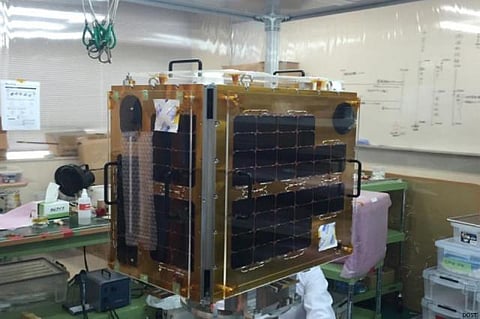Philippines launches first non-commercial satellite
Filipino dream of having its own space agency now closer to reality

Manila: The Philippines launched its first non-commercial microsatellite, Diwata 1, on March 23. The spacecraft is expected to soon beam information crucial to saving lives and property.
At around 11am Manila time, the United Launch Alliance Atlas V rocket took off from Cape Canaveral Air Force Station in Florida, US, carrying the parcel box-sized Diwata 1 together with other payload, totalling 3,395 kilograms.
“The launch of Diwata 1 marks a new and exciting chapter in the use of space technology in the Philippines,” Dr Mahar Lagmay, who heads the Nationwide Operational Assessment of Hazards (Project NOAH) team, said.
The remote sensing information that the 50kg Diwata 1 will beam to earth will be crucial. The data that it will gather can warn of natural disasters and improve weather detection; assist in determining agricultural growth patterns and monitoring forest cover and mining; aid in the protection of cultural and historical sites; and help in the guarding of territorial borders of the Philippines.
The microsatellite was developed over three years at a cost of P800 million (Dh63 million).
Although the Philippines had a privately owned commercial communications satellite in orbit, the Agila 1 — which was launched in 1999 — the Diwata 1 is the first spacecraft assembled and developed by Filipinos.
“Diwata is the country’s first microsatellite designed, developed, and assembled by Filipino researchers and engineers under the guidance of Japanese experts from Hokkaido University and Tohoku University. The satellite is designed to provide real-time images for disaster risk management and other applications …” the Philippine Council for Industry, Energy and Emerging Technology Research and Development said.
Likewise, the training that Diwata 1 provided for Filipinos will go a long way in preparing them to tackle such high tech projects in the future.
“With Diwata comes the Filipino dream to have its own Philippine Space Agency,” the research council said.
Diwata means fairy in Tagalog, the language of the nation.
The spacecraft is a low earth orbit satellite set to fly 400km above ground.
The council said that the rest of the team that developed the Diwata 1 is now looking at developing a ground receiving station that will allow space borne images to be transmitted to earth.
“It will also be used to transmit commands from the ground to the microsatellite to carry out is mission effectively,” the council said.
The Philippines is often at the mercy of serious weather disturbances. Every year hundreds of Filipinos lose their lives and properties from storms and typhoons.
With solutions like Project NOAH and Diwata 1, researchers hope to create improved strategies to cope with natural disasters and dampen the effects of severe weather.
Sign up for the Daily Briefing
Get the latest news and updates straight to your inbox



